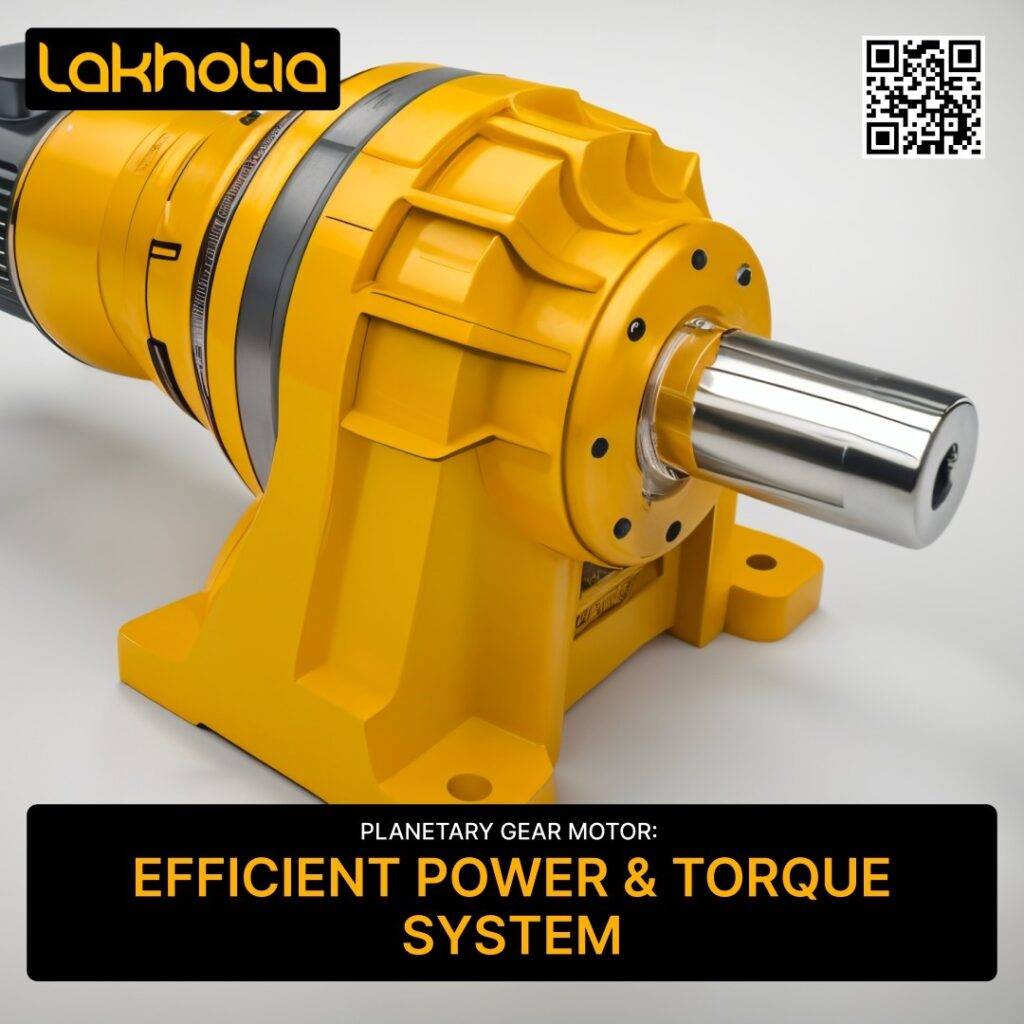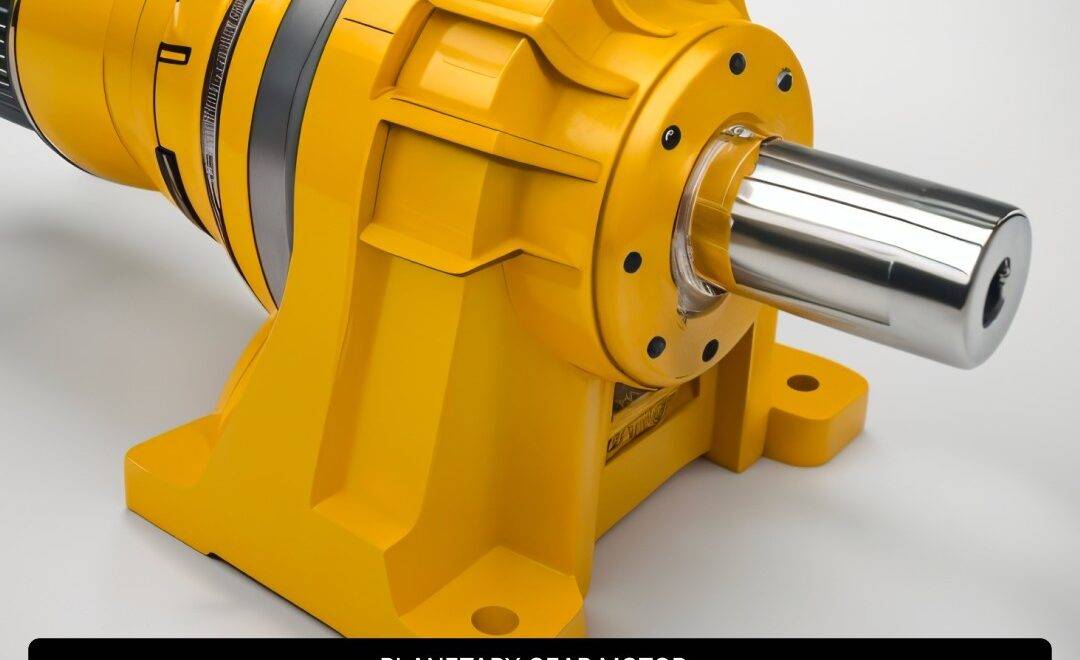
The Science Behind Planetary Gearmotors: Understanding Their Inner Workings
Planetary gear motors are a vital component in modern engineering, widely used in industrial, automotive, and robotics applications. These motors utilize a planetary gear system to achieve speed reduction or torque multiplication, making them highly efficient and compact. Understanding their inner workings requires delving into the principles behind planetary gears, their structure, and how they contribute to power transmission.
What is a Planetary Gear System?
At the core of a planetary gear motor lies the planetary gear system, a highly efficient and compact mechanical arrangement designed for torque transmission and speed reduction. This system consists of three main components, each playing a crucial role in its operation:
Sun Gear
The central gear that receives power directly from the input shaft. It serves as the primary driver and is responsible for initiating the movement within the planetary system
Planet Gears
Smaller gears that revolve around the sun gear while simultaneously engaging with the ring gear. These gears distribute the load evenly, reducing wear and enhancing durability. The number of planet gears can vary based on the design, but multiple planet gears contribute to better planetary gearbox efficiency.
Ring Gear
The outermost gear, also known as the annulus, which has internal teeth that mesh with the planet gears. The ring gear remains stationary or rotates, depending on the desired output function of the planetary gear motor.
Planetary Gear Ratio Calculation
The planetary gear ratio calculation is essential for determining how much speed reduction or torque multiplication can be achieved. The formula to calculate the gear ratio is:
By altering the size of these gears, different gear ratios can be achieved, making planetary gear motors versatile for various applications, from precision robotics to heavy-duty industrial machinery.
How Planetary Gear Motors Transmit Torque
One of the key functions of a planetary gear motor is its ability to efficiently transmit torque. This process involves:
- The motor input shaft drives the sun gear, which initiates motion in the system.
- The planet gears rotate around the sun gear, engaging with both the sun and ring gears.
- The interaction of these gears creates a mechanical advantage, allowing torque to be transmitted effectively from the input shaft to the output shaft.
This configuration ensures high torque output, compact design, and greater load-bearing capacity, contributing to the high efficiency of planetary gears.
Advantages of Planetary Gear Motors
1. Compact and Concentric Design
Unlike traditional gear systems that are arranged in a linear fashion, planetary gear motors feature a nested configuration, reducing space requirements and increasing efficiency. This makes them ideal for applications where size constraints are critical.
2. High Efficiency
Due to multiple gear engagements, planetary gearbox efficiency is significantly higher than conventional gear systems. Reduced frictional losses lead to minimal energy wastage, ensuring reliable performance in demanding environments.
3. Even Load Distribution
The load in a planetary gear motor is evenly distributed among multiple planet gears. This enhances durability, prevents excessive wear, and enables the system to handle higher loads without failure.
4. Versatility in Directional Control
Planetary gear motors allow for precise directional control of the output shaft. By adjusting the input and output configurations, engineers can achieve different rotational directions and speeds, making them ideal for robotics, industrial automation, and automotive systems.
5. Improved Torque Transmission
The planetary gear ratio calculation enables engineers to design motors with the optimal balance between speed and torque. Higher gear ratios result in greater torque output, making planetary gear motors ideal for heavy-load applications.
6. Durability and Longevity
Due to the multiple engagement points, the efficiency of planetary gears ensures minimal stress on individual components. This leads to reduced maintenance costs and a longer operational lifespan compared to other gear systems.
Applications of Planetary Gear Motors
Planetary gear motors are highly versatile and widely used across multiple industries due to their superior efficiency, high torque transmission, and compact design. Their ability to provide smooth and precise motion control makes them an essential component in modern mechanical and industrial applications. Below are some of the key industries where planetary gear motors are extensively utilized:
1. Robotics
Planetary gear motors play a vital role in robotic arms, automation systems, and precision control mechanisms. The high planetary gearbox efficiency ensures that robotic movements remain accurate, smooth, and energy-efficient. The planetary gear ratio calculation allows robots to achieve optimal torque for gripping, lifting, and manipulating objects with precision. These motors are widely used in industrial robots, medical robots, and collaborative robotic systems.
2. Automotive Industry
In the automotive sector, planetary gear motors are essential for electric vehicles (EVs), hybrid cars, and power steering systems. They help in regulating torque transmission efficiently, ensuring smooth gear shifts and improving overall vehicle performance. The efficiency of planetary gears enhances energy conservation, making them ideal for battery-operated systems such as EV powertrains, window regulators, and adjustable seating mechanisms.
3. Industrial Machinery
Planetary gear motors are crucial in heavy-duty industrial applications such as conveyors, cranes, and manufacturing equipment. They provide high torque output while maintaining compact and durable designs, making them ideal for high-load applications. Due to their superior planetary gearbox efficiency, they minimize frictional losses, ensuring seamless operation in packaging machines, factory automation, and material-handling systems.
4. Aerospace Applications
In aerospace engineering, precision, reliability, and compactness are critical. Planetary gear motors are used in satellite positioning systems, aircraft landing gear mechanisms, and actuators for flight control systems. Their high planetary gear ratio calculation capabilities allow for accurate motion control, which is essential for navigation systems, space exploration technologies, and aeronautical instrumentation.
5. Medical Equipment
The medical field relies on planetary gear motors for imaging devices, robotic-assisted surgery, and automated patient care equipment. Their efficiency of planetary gears ensures that medical devices operate with minimal noise, high precision, and optimal power consumption. They are commonly found in MRI scanners, dental drills, prosthetic limbs, and robotic surgical instruments that require controlled and reliable movement.
Conclusion
The science behind planetary gear motors highlights their unparalleled advantages in terms of efficiency, compactness, and torque transmission. With precise planetary gear ratio calculation, engineers can tailor these motors for specific applications, ensuring optimal performance. Their durability, high planetary gearbox efficiency, and versatility make them the preferred choice across multiple industries.
For industries requiring top-quality conveyor belts to complement their machinery, Lakhotia stands as the best conveyor belt supplier in India, offering durable and high-performance solutions. Investing in reliable planetary gear motors and premium conveyor belts ensures superior motion control and seamless industrial operations.


